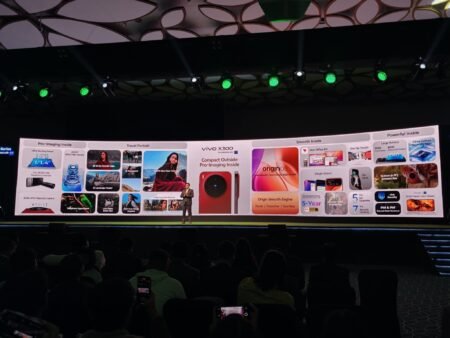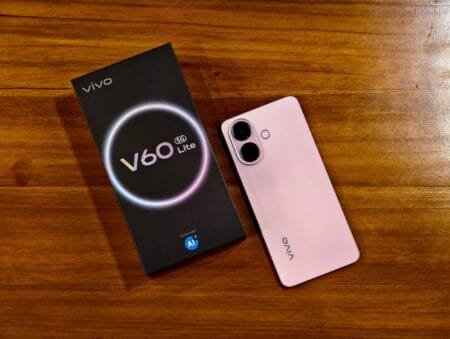Vivo has announced its own self-developed operating system called BlueOS at the 2023 Vivo Developer Conference. The new OS is designed to provide a smarter, smoother, and more secure user experience across various devices, especially smart wearables and smart home products.
Here’s what we know!
BlueOS is based on the Rust programming language, which is known for its high performance and memory safety. Vivo claims that BlueOS is the first operating system in the industry to use Rust for its system framework, which can prevent memory-related security vulnerabilities at the compilation stage.

With the BlueHeart AI model, BlueOS can recognize complex user intents and interact naturally through voice, image, and gesture. BlueOS also enables a new way of developing applications, where AI can automatically generate code, images, and texts.
The BlueOS also boasts a virtual graphics card framework, which can improve the rendering efficiency and reduce the memory consumption of the system. It also introduces a super coroutine mechanism, which can bind resources with coroutines and cancel them safely when needed, thus saving CPU instructions.
BlueOS also supports BlueXLink, a cross-device smart connection technology developed by Vivo, which can enable data sharing and access among multiple devices, such as smartphones, tablets, watches, and cars. For example, BlueOS can support functions like transportation cards, access cards, and NFC car keys.
BlueOS will first debut on the Vivo Watch 3, which is scheduled to launch on November 13 in China. The new smartwatch will feature a new smart interaction experience, which can allow users to change the watch faces using voice commands. Vivo says that BlueOS will bring the fastest app launch speed and the smoothest performance on the watch.
Vivo has not revealed whether BlueOS will be exclusive to China or available globally. It is also unclear whether BlueOS will replace Funtouch OS, Vivo’s current Android-based operating system, on its smartphones. However, Vivo says that BlueOS is compatible with multiple Posix standard kernels, Linux kernels, and RTOS kernels, which suggests that it can run on different hardware architectures.
BlueOS is the second self-developed operating system announced by a Chinese smartphone maker this year, following Xiaomi’s HyperOS, which was unveiled in October. HyperOS is also based on Android, but with a deeper evolution and integration of Xiaomi’s Vela system. HyperOS is expected to replace MIUI, Xiaomi’s current Android-based operating system, on its devices.
Both BlueOS and HyperOS show the ambition and innovation of Chinese smartphone makers, who are trying to create their own operating systems that can provide better user experiences and more differentiation from Android. However, it remains to be seen how these new operating systems will compete with Android and other operating systems in the market.
Read more>> Software
Discover more from wazzuptechph
Subscribe to get the latest posts sent to your email.








